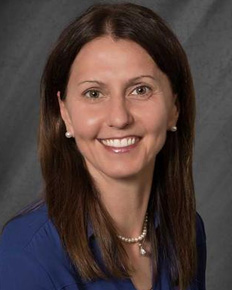
Antonia Kolokythas, DDS, MSc, ELAM '19
October 17, 2019
It is April 2015, and I am in my office working on one of my research projects. The department chair walks into my office holding the Journal of Oral and Maxillofacial Surgery (JOMS) in his hand. He puts it on my desk and says, "You ought to do something about this!"
"About what?" I ask.
"The editorial," he replies.
The previous editor-in-chief of the JOMS had published an editorial in that issue titled "The Role of Women in Academic Oral and Maxillofacial Surgery." As I read the editorial, I felt quite disturbed with the author's assumptions about why women do not pursue academic careers in our specialty. To my surprise I read comments such as "…women have shown that they can perform oral and maxillofacial surgery as well as men" and by the end of training "…most women will be approaching the peak of their child-bearing age." Soon enough emails started pouring in from colleagues who were outraged with the editorial (interestingly, men more so than women…).
The gender disparity issue in the leadership and academic faculty in oral and maxillofacial surgery (OMFS) is more profound than any other dental specialty, with only 33 women full time faculty out of 433 total, five women chairs out of 102, only ten program directors out of 102 and no women in the administration of the American Association of Oral and Maxillofacial Surgeons, the specialty's main organizational body, or the American Board of Oral and Maxillofacial Surgery, the board certification body of the specialty.
In response to the JOMS editorial, I designed a survey to ask women why they chose (or would choose) academics or the private sector and sent it to all women in our specialty, including residents. Some questions allowed space for comments as well. We had a 100% response rate to the survey, and the comments were very rich. Our survey showed that lack of mentorship, lack of peer support and implicit bias against women were the main reasons women do not pursue an academic career in OMFS and are the hindrances as well for pursuing leadership positions.
As I prepared a manuscript around the survey and its findings for submission to JOMS, I continued to find more and more published work that truly outraged me. Fast forward to 2017. I am now chair of the OMFS Department at the University of Rochester, and I am writing a paper for my final assignment in one of the courses for my master's in health profession education, titled "Gender Gap in Academic Medicine and Dentistry." I took a deeper dive into the issue and, no surprise, the same themes emerged as barriers for women's advancement in leadership. The gender gap in leadership and high academic ranks in medicine and dentistry is a tangible ongoing issue. Women continue to be beset by the "glass ceiling" despite the fact that they do possess the credentials and intellectual capital for promotion. Lack of mentorship and peer support, as well as negative implicit bias toward women's academic achievements and leadership skills are the main hindering factors underlying the gender disparity. Abraham Flexner — who is credited with developing the medical education system in the United States and Canada — his concern about discrimination in medicine, and his legacy of advocacy, inclusion and excellence, are not being honored in today's academic world.
All of this fed into our article, "Gender Gap in Leadership in Academic Medicine and Dentistry: What Are the Barriers? What Can Be Done to Correct It?" which was published in JOMS in August 2019.
There is a need to engage dental and medical students, increase the number of women role models and enhance mentorship to increase attraction toward and advancement in academic careers in medicine and dentistry. Cultural changes at the individual, institutional and the professional organization levels, and the development of strategies to promote equality in career advancement among genders are required. Environments that include assistance from department heads and professional career-life coaches in the creation of individualized career plans for women should be developed. The implicit biases against women's leadership skills and worthiness of promotion to high academic ranks at rates comparable to their male colleagues have to be urgently addressed. Finally, the zero tolerance policy on discrimination against women in their work environments that is universally adopted by organizations today has to be emphatically enforced.
We ought to advocate for each other, support each other and be truly inclusive in order to achieve excellence in academic medicine and dentistry. When women thrive, organizations thrive and nations thrive, too. I am writing this on September 3, 2019, after attending the first faculty senate meeting for the year at the University of Rochester, during which our new president, Sarah Mangelsdorf, PhD, the first woman leader in the school's history, addressed the faculty for the first time since taking office!
Antonia Kolokythas, DDS, MSc, ELAM '19
University of Rochester School of Medicine and Dentistry